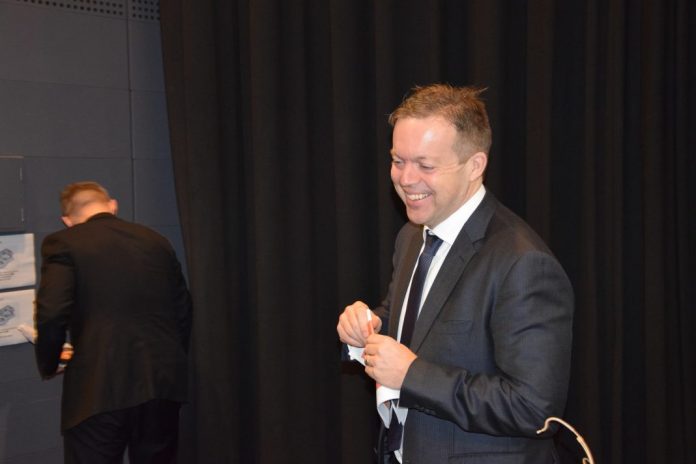Self-sufficiency in feed, good sales and a decrease in costs pay off for the world’s biggest salmon farmer.
In a press release this morning, Mowi posted that it had achieved an operational EBIT of EUR 211 million in the second quarter of 2019, compared to EUR 175 million in the corresponding quarter of 2018.
Record-high
“This was a good quarter for Mowi with 26 % increase in farming volumes year over year and an overall solid operational performance. The costs decreased in the farming operations, and sales of both feed and value-added products were record-high”, said Mowi CEO Alf-Helge Aarskog.
Mowi’s Board of Directors has resolved to pay a quarterly dividend of NOK 2.60 per share.
Up 15 per-cent
Mowi reported operational revenues of EUR 1 021 million in the second quarter of 2019, up nearly 15 per cent from last year’s EUR 888 million. Total harvest volume was 98 483 tonnes (78 346) in the quarter. Harvest guidance for 2019 is unchanged at 430 000 tonnes.
Salmon of Norwegian origin achieved an operational EBIT per kilo of EUR 2.45 (2.56) in the second quarter, while salmon of Scottish and Canadian origin reported operational EBIT per kilo of EUR 2.92 and EUR 0.83 respectively (EUR 2.38 and EUR 0.98). Salmon of Chilean origin reported operational EBIT per kilo of EUR 1.87 in the quarter (EUR 1.86).
Mowi Feed reported an operational EBIT of EUR 3.0 million (EUR 0.8 million). Mowi Consumer Products reported an operational EBIT of EUR 4.9 million (EUR 12.0 million).
Feed plant
The salmon farmer wrote that its self-sufficiency strategy on feed – which is developing its range of products, including freshwater, organic and cleaner fish diets – is paying off.
“Our new feed plant in Scotland started trial production in May and has recently started to produce and deliver feed to our Scottish farming operations. This is an important step towards self-sufficiency of feed and further integration of the value chain. It is particularly encouraging that we have increased production capacity from 170 000 tonnes to 240 000 tonnes,” added Aarskog.


